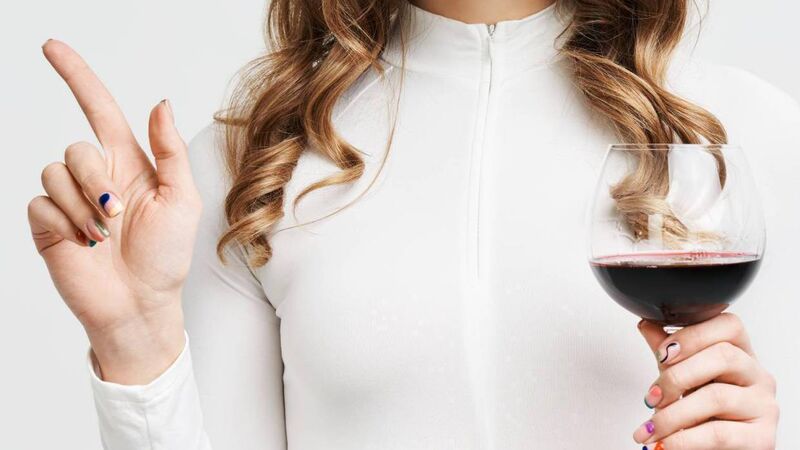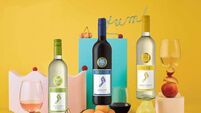We could all live in a world without alcohol advertising

According to the latest Healthy Ireland survey, 22% of the population (aged 15+) are categorised as binge drinkers. iStock/model
A friend of mine had to have a long and tedious disagreement with her son recently about why he couldn’t have a zero alcohol beer. She ended up saying “Because I said so”, which is never a convincing winning argument, but she’s a GP, it was the end of a long day, and she couldn’t get into the multitude of factors of why her child shouldn’t drink zero alcohol beer.
She wasn’t annoyed with her son for the pointless discussion, she was most annoyed with the big alcohol brands that are relentlessly promoting their zero alcohol versions in all the places where full fat alcohol advertising has been restricted.
She believes if there wasn’t superfluous advertising of the zero alcohol version, the topic wouldn’t have even come up for discussion.
The invention of palatable zero alcohol drinks is most welcome. I am a fan myself. If I fancy a cool beer on a hot day without any of the fuzzy headed after effects, I know exactly where to go to buy one.
Considering zero alcohol beers represent just 1.5% of the drinks market, manufacturers are certainly spending a lot of money marketing that tiny part of their business.
Or, excuse my cynicism, is the blanket promotion of zero alcohol beer a handy way to work around the restrictions of alcohol advertising and still get brand awareness into the consciousness of consumers?
Ireland has been making concerted efforts to reduce alcohol consumption. Back in 2018, the government passed the Public Health (Alcohol) Act with the aim to reduce alcohol consumption to 9.1 litres of pure alcohol per person per annum by 2020, delay the initiation of alcohol consumption by children and young people, and reduce the harms caused by the misuse of alcohol.
Everyone knows the cost of alcohol to our already overstretched health system, alcohol-related discharges from hospitals cost €1.5 billion in 2012, alcohol is a contributing factor to 200 diseases, one in eight breast cancers are attributable to alcohol; and young adult men are presenting with cirrhosis in their twenties.
So, how much do you drink? Are you a ‘glass of wine with dinner’ , a ‘beer or two after work on Friday night’ , or a’ I lost count after I finished the first slab’ type of drinker?
Personally, nowadays I’m a ‘can’t have more than two glasses of wine or else I lose sensation in my teeth’ type of drinker.
In 2019, the Health Research Board found on average every person in Ireland aged 15 and over drank “10.8 litres of pure alcohol a year - the equivalent of either 40 bottles of vodka, 113 bottles of wine or 436 pints of beer. Given 25% of people in Ireland don’t drink at all, actual consumption rates among those who do drink would be much higher than this”.
According to the latest Healthy Ireland survey, 22% of the population (aged 15+) are categorised as binge drinkers. A small amount of the population are doing most of the drinking and exposing themselves, and others, to all the harms that excessive drinking brings.
All these facts underline why less alcohol advertising is necessary and why more zero alcohol advertising, which uses the same logo and branding as the parent alcohol product, makes a mockery of legislative efforts to protect public health.
The charity, Alcohol Action Ireland, has been challenging these marketing trends, saying these zero alcohol ads are “everywhere that regular alcohol ads can’t be - on billboards, on public transport and on TV, especially during sporting events.”
At the moment, there is a kerfuffle about health warnings on alcoholic beverages playing out between the government and the drinks industry, with big alcohol brands resisting measures that might lead to barriers to trade and reduce profits.
Sounds like the classic tactics, ‘delay, dilute, derail’, by the tobacco industry to resist health warnings on cigarette boxes and the smoking ban back in 2004.
Some 18% of the population still smoke, but imagine how weird it would be to see tobacco advertising now. A world without alcohol advertising will be just fine.
The drinks industry argues that it is offering the consumer choice, says ‘Drink Responsibly’, warns against the “nanny state” (as if being protected by a maternal caregiver is a bad thing!), proffers the overused term ‘personal responsibility’, and maybe even suggests parents need to educate their children on the differences between 0% and 5% beer. Parents have enough to do!
Here’s an idea - turn off the tap of marketing that floods societies with messages to consume a product that causes three million deaths every year worldwide. And save us from draining conversations with children about why they can’t drink zero alcohol beer.







 App?
App?




